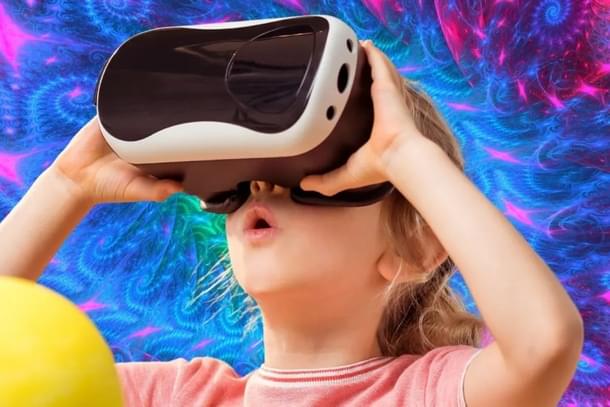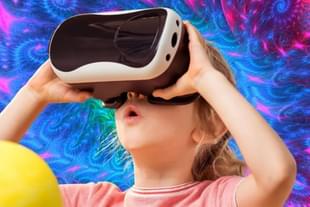Culture
How Metaverse Could Alter The Engagement With Hindu Faith
Sreevas Sahasranamam
May 12, 2024, 04:34 PM | Updated 04:17 PM IST
Save & read from anywhere!
Bookmark stories for easy access on any device or the Swarajya app.


Imagine getting Geetopadesha straight from Lord Krishna. No, I am not talking about being on a Sci-Fi time machine to take me back in time to the Kurukshetra war.
Rather, I am talking about being in my living room, donning the role of Arjuna, seeking answers to my internal battles through Geetopadesha from Lord Krishna's avatar on a Ray-Ban Meta glass.
This is powered by the metaverse of Mahabharat and a small language AI model trained on Bhagavad Gita and its multiple commentaries.
Well, I have not experienced this yet, but we are probably only days away from being able to do this as we have projects like Mahabharat in the Metaverse being developed by BharatBox and Mythoverse.
This and other such startup initiatives are going to fundamentally alter the intersection between technology and Hindu faith traditions, the Puranas and Ithihasas.
Almost all of the Hindu scriptures are written in the Sanskrit language. Under the influence of colonialism, we have almost entirely moved away from this language and this has made Vedas and scriptures inaccessible for most people.
Even if one knew the language, there is missing information due to missing characters in excavated records and cave writings.
Artificial intelligence is altering the landscape here, by making it possible to access this by removing language barrier and restoring missing information through machine learning.
There are already startups like Mokx.org that are creating small language AI datasets on the Vedic scriptures and developing ChatGPT-type interactive interfaces for answering layman’s questions around it.
So we are more likely to first encounter an AI-guru in our spiritual journey before finding a real-life guru. I am in no way devaluing the support of a real-life guru, rather I believe we are going to see a multi-step process in how kids are going to engage with the Hindu faith, as envisioned in a futuristic scenario below.
First, they are going to be immersed in playing rasa-leela as gopis in the Brindavan metaverse by jumping and singing from their couch.
The next day, they are going to undertake a bungee jumping experience as Prahalada being pushed off a cliff by Hiranyakashipu, and they have to chant Narayana to find a hand-trampoline platform to emerge from below to push them back up. These experiences would immerse the kids into the world of Puranas.
Second, these kids once they have completed role-play games, will transition to a world of gamified samvada where they would engage in discussions trying to find answers to questions they had from the role-play games.
They would get the answers straight from the sources, as mentioned earlier, it could be Geetopedesha samvad with Krishna avatar or accompanying Adi Sankaracharya on the pan-India Sankara vijayam journey to engage in a samvad around Advaita philosophy.
Third, they would transition into immersing themselves in a Himalayan world for deep meditative experiences, again from their living room.
Currently, a lot of us when we meditate, get distracted very quickly. However, an immersive world experience with the right background experience and appropriate brain stimulations would alter our engagement with meditation.
Finally, while engaging in deep meditation, they would realise that they need further guidance on specific spiritual aspects and here they would need to seek the help of a real-life guru.
Overall, this process of deep immersion in meditation would allow them to explore the hidden realms of spirituality within individuals, leading to the creation of a generation of highly self-evolved humans.
Overall, for realising the above-mentioned imaginative scenarios, immense opportunities are going to be opened up for entrepreneurs around Indic character building based on Puranas, creating metaverse environments for Ithihasas, graphics development for immersive worlds like Brindavan or Ayodhya, and development of AI datasets based on Vedas.
All this has the potential to alter the engagement with the Hindu faith, powered by technology.
Sreevas Sahasranamam is a Professor at the Adam Smith Business School, University of Glasgow, UK. When he is not talking about entrepreneurship and innovation, he engages with Indian cultural history.





